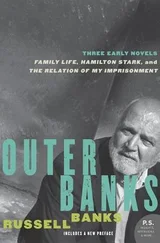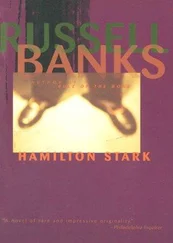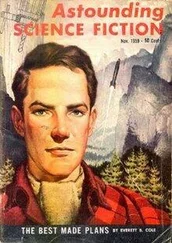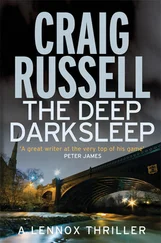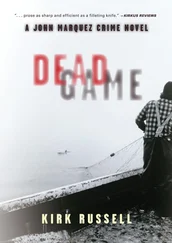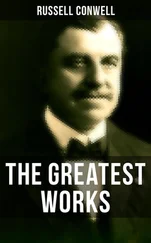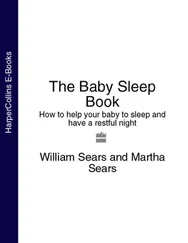The young Guyanese insomniac never slept another minute. Unbeknownst to her doctors at the time of filming, she had already entered her LD, the ultimate interval of wakefulness that precedes death. “LD” for Last Day was a new acronym then, midwifed into the language by the sleep crisis; today, it’s universal med-slang. Kids of six use “LD-er” as a playground insult. Schools instruct children to treat orexins as “ordinary” humans (an instruction that contains its own defeat, doesn’t it?). The video is now nine years old. We’ll keep looping her forever, for donors. Twelve days after they shot her segment, she died. Her true name was then released to the public, like a genie unbottled: Carolina Belle Duncan, age nineteen. Today she is a CDC celebrity: the first recorded death from the orexin-impairment. Dori was the East Coast’s inaugural mortality, the fourteenth recorded death nationally.
A Johns Hopkins neurologist claimed that a mere two hours of recovery sleep would have prevented Carolina’s death from cardiac arrest. Nine to thirteen hours, he said, would have ended her hallucinations and readmitted her to the waking world with stable vital signs. The insomnia’s worst effects could be undone that speedily. One night’s sleep would have saved her life. He compared it to getting an emergency tank of oxygen to a stranded diver.
Nine to thirteen hours —that figure haunted me.
It haunted everybody, apparently.
Without sleep, how long can a person live? The record was set last year when a woman in Devil’s Creek, Nebraska, collapsed after twenty-two days. Five hundred and four hours, without a minute of replacement sleep. Masked like a raccoon, at half her original weight. Her body had rejected all transfusions. She was a white lady, but her face had turned a blotchy black. Yet this is a deceptive figure: twenty-two days. Months before her death, the Devil’s Creek woman had reported a complete cessation of sleep. Many insomniacs who claim they haven’t slept a wink in years are actually, unwittingly, lying to us. Patients swear they are awake. But the EEGs show that regions of the brain are going off-line. Neuronal networks shut down, fire on again, in a sort of cortical round-robin. “Micro-sleeps.” Rolling blackouts. Some areas go dark for whole minutes; still the insomniac claims to be fully awake. In effect, the brain doses itself with eyedroppers of unconsciousness. We think “microsleep” must account for certain orexins’ surprising longevity; some LD-ers, like Dori, can hang on for weeks before death from cardiac arrest, stroke, multiple organ failure.
Since joining the Slumber Corps, I’ve become obsessed with statistics. For bedside reading, I’ll sometimes turn to our brochures. I do a dozy arithmetic under the skirted blue lamp, until these numbers add up to a temporary conviction that I deserve a night’s sleep.
18 Insomniacs Will Dream Tonight, Thanks to Your Gift.
Less than 1 % of donors experience any kind of adverse reaction.
Since its inception, this branch of the Slumber Corps has helped over 3,000 insomniacs.
There are close to 250,000 people currently on our wait-lists nationwide. Priority always goes to urgency of need.
And my favorite:
34 % of Insomniacs Will Regain Their Natural Ability to Sleep After a SINGLE TRANSFUSION.
Our work really does save lives. Nobody can deny that extraordinary fact. During the early trials of the sleep donation procedure, Gould’s team made an astonishing finding. For roughly a third of patients, full recovery from the orexin-disorder is possible after a single ten-hour transfusion.
Doctors cannot yet account for why some patients continue to suffer from the orexin-disruption and require multiple transfusions, whereas others are “reset,” cured. The mode of action is unknown. Some doctors posit that, like electroconvulsive therapy, ECT, treatment, a sleep transfusion can produce profound changes in a recipient’s brain chemistry. Cases do exist where a single session of ECT results in some shockingly happy customers, says Dr. Gary Peebles, the Director of the National Sleep Bank (and where is the humor-transfusion of authentically funny jokes for Dr. Peebles? I wonder). In these cases, the administration of a strong electric current through the suffering patient’s brain reverses all symptoms of catatonia and depression, breaks cycles of mania and relieves many other plaguing shadows and diagnosable sorrows that can be found in the DSM-12. Our researchers, says Dr. Peebles, are working to discover just why the delivery of sleep to a dreamless body can and does produce a full recovery for certain patients —and only a temporary reprieve in others.
To date, every former insomniac who regained the ability to sleep, post-transfusion, remains fully rehabilitated. We have no recorded relapses. No longer are these patients dependent on the sleep of strangers. Post-transfusion, they can achieve REM in their home bedrooms: colors of their own freakish and individual manufacture flood their minds again, plots spiral up, imaginary faces and animals bubble and flume: they dream. It’s heartbreaking, of course, when this does not happen. Some people, we now fear, might require weekly sleep transfusions for the rest of their lives. A blank check to float their nights.
The Slumber Corps pledges to get sleep to every insomniac “for as long as her or his need persists.” That’s our mission statement. Where is all that sleep going to come from, you’re wondering? Us, too. Fiscally, it’s a bankrupting promise. Mathematically, I’m told, it’s a future lie. In five years time, the Slumber Corps’ monumental commitment to these insomniacs may well be an abandoned ideal, like a temple buried in the jungle. Smart people on the Slumber Corps’ own advisory board call our pledge a “pipe dream,” as dangerous as anything we test for at the Elmhurst, New Jersey, sleep-processing plant. Yet we continue to make this promise to our incurables.
On nights when sleep continues to elude me, I consult my “zeros.” My own recruitment stats.
And when even this does not work?
On my worst nights, when my eyes are burning and dawn is two hours away, I’ll give up on fact, give in to fantasy. I’ll shut my eyes and pretend that Dori is receiving one of these transfusions. They were not available, of course, when she needed them —when she lived. Which was not so long ago, not at all. The sun rises, and she’s home. Birdsong is twittering in the air, proof of invisible birds. Dori is back in the world. Her eyes open on her pillow, and they are sea green and absolutely clear. Voided of all nightmares. No earthworm nest disturbs her now, no crumb of boneyard dirt. Her waking is an instantaneous rebirth. Her hair spools onto the pillowcase, happy memories are coiling in her head, and tomorrow is laid out at her feet, a net of yellow light and blue shadow that stretches from bedframe to door.
And then?
Written out like this, you know, it sounds a little Frankenstein .
Pinkly flushed, arisen, my sister startles from the room. Grape bunches of curls spill down the back of her pajamas. She is the age she would be today: twenty-nine.
Last July, the Supreme Court ruled that babies could be donors, with their parents’ consent. Babies are deep, rich wells for us. They serenely churn forth a pure, bracing sleep, with zero adult terror corrupting it. Since the new law went into effect, we Corps volunteers have been trying, with renewed zeal, to sign up whole families. We’ll tap the parents’ sleep, which is often useless to us (a fact we don’t advertise, of course), just to get a baby’s donation. “Pump me first,” the mothers implore, so overwrought that they vitiate their draws with cortisone. We do not discuss this with the women —their polluted sleep, the futility of their generosity. We draw from parents because the experience reassures them. Really, what the nurses are draining is these mothers’ fear of the unknown. They wake up, refreshed, with no memory of the draw, awash in goodwill.
Читать дальше

